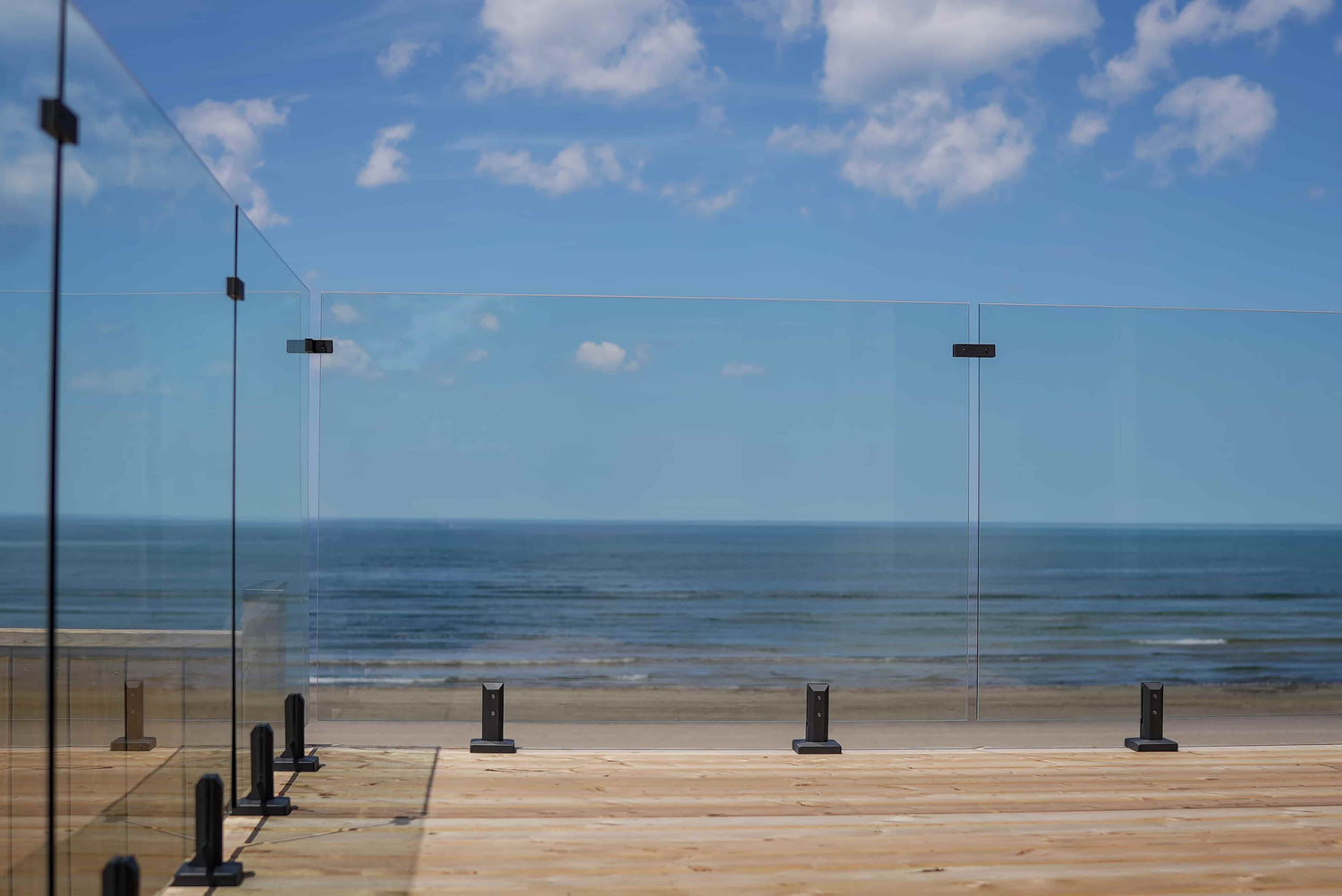Nevada Building Code for Glass Railings: A Homeowner and Builder’s Guide
Glass railings are more than just a sleek architectural choice—they're a functional design element that combines safety, durability, and elegance. In Nevada, installing glass railings requires careful attention to the latest building codes, especially for residential projects. With the state now enforcing the 2024 International Residential Code (IRC) and the 2021 International Building Code (IBC), understanding the compliance standards is critical for smooth approvals, long-term safety, and peace of mind. Whether you're a homeowner transforming a backyard view or a contractor upgrading a stairwell, this guide walks you through everything you need to know about Nevada’s building codes for glass railings.
Nevada’s Building Code Framework
Nevada currently enforces:
- 2024 IRC – Governs one- and two-family dwellings
- 2021 IBC – Applies to commercial and multifamily buildings
Many jurisdictions within Nevada, such as Las Vegas, Reno, and Henderson, may implement additional local amendments. Always consult your local building department for the most accurate guidance before you begin a project.
According to UpCodes, these standards are now in effect statewide. You can find compliant modern glass railing systems tailored for Nevada homes and businesses.
Key Residential Requirements Under IRC 2024
Guardrail and Handrail Heights
As detailed in IRC Section R312 (2024):
- Guardrails are required when the walking surface is more than 30 inches (762 mm) above grade.
- The minimum guard height is 36 inches (914 mm).
- If a guard also functions as a handrail, the height must be between 34 and 38 inches (864–965 mm) from the stair nosing.
Explore code-compliant glass railing hardware to ensure safety and support.
Safety Glass Requirements (IBC 2021 Section 2407)
All glass used in guards must be either:
- Tempered safety glass, which shatters into small, blunt pieces to prevent injury.
- Laminated safety glass, which contains a polymer interlayer to hold shattered pieces together.
Frameless glass railings must include a top rail unless laminated glass is used, as required by the IBC.
See the National Glass Association’s safety guidelines for more on proper glass types and uses.
Structural Load Requirements
To ensure structural integrity:
- All guardrails must resist a concentrated load of 200 pounds in any direction at the top rail.
- Systems must be tested to perform under dynamic conditions, especially for decks or staircases.
Opening Limitations
Openings in the railing must be designed to prevent the passage of a 4-inch diameter sphere, especially in residential areas with children.
Key Code Requirements for Nevada Glass Railings
|
Feature |
IRC 2024 / IBC 2021 Requirement |
Importance |
|
Guardrail Height |
36 inches minimum |
Ensures fall protection on elevated surfaces |
|
Handrail Height (Stairs) |
34–38 inches |
Comfort and grip during stair use |
|
Load Resistance |
200 lbs in any direction |
Prevents collapse under force |
|
Approved Glass Type |
Tempered or laminated safety glass |
Reduces injury risk if broken |
|
Opening Gap Limit |
Max 4 inches |
Prevents child entrapment or object passage |
|
Top Rail Requirement |
Yes, unless using laminated glass |
Adds structural redundancy |
Common Mistakes to Avoid
Contractors and DIY installers frequently run into trouble for:
- Using annealed (non-safety) glass, which is not permitted.
- Ignoring local amendments, especially in cities like Reno and Las Vegas.
- Exceeding 4-inch spacing, leading to potential hazards for children.
- Skipping top rails in frameless designs where required.
To stay compliant from day one, consider installation kits designed for code adherence.
Conclusion
Nevada’s updated building codes underscore the importance of balancing aesthetics with safety. Whether you're planning a glass balcony, staircase, or deck railing, it’s essential to choose code-compliant materials, respect height and spacing requirements, and verify local amendments. By aligning your project with the 2024 IRC and 2021 IBC standards, you’ll not only avoid delays and fines—you’ll also create a secure, stunning space that’s built to last.
Explore code-ready glass railing systems designed to meet Nevada’s building standards.
FAQs About Glass Railing Code in Nevada
1. Do I need a permit to install glass railings on my property?
Yes. Most municipalities in Nevada require a building permit for any structural alteration involving guardrails.
2. Can I use frameless glass for my residential deck?
Yes, but only with laminated glass or with an added top rail, as specified by the IBC.
3. Are the rules different in cities like Las Vegas?
Potentially. Las Vegas may have local amendments, so always check with the city’s building department.
4. What kind of glass is safest and most compliant?
Tempered or laminated safety glass is required. Never use annealed glass for guardrails.
5. What’s the risk of not following Nevada’s railing code?
Besides failing inspection, non-compliance can lead to liability issues, injuries, or forced removal of the railing system.
Let customers speak for us

Garde-corps en verre près de chez vous
Découvrez comment The Glass Railing Store offre un service exceptionnel à nos clients, grâce à notre équipe dévouée et compétente et à leur amour pour nos produits de garde-corps en verre .







